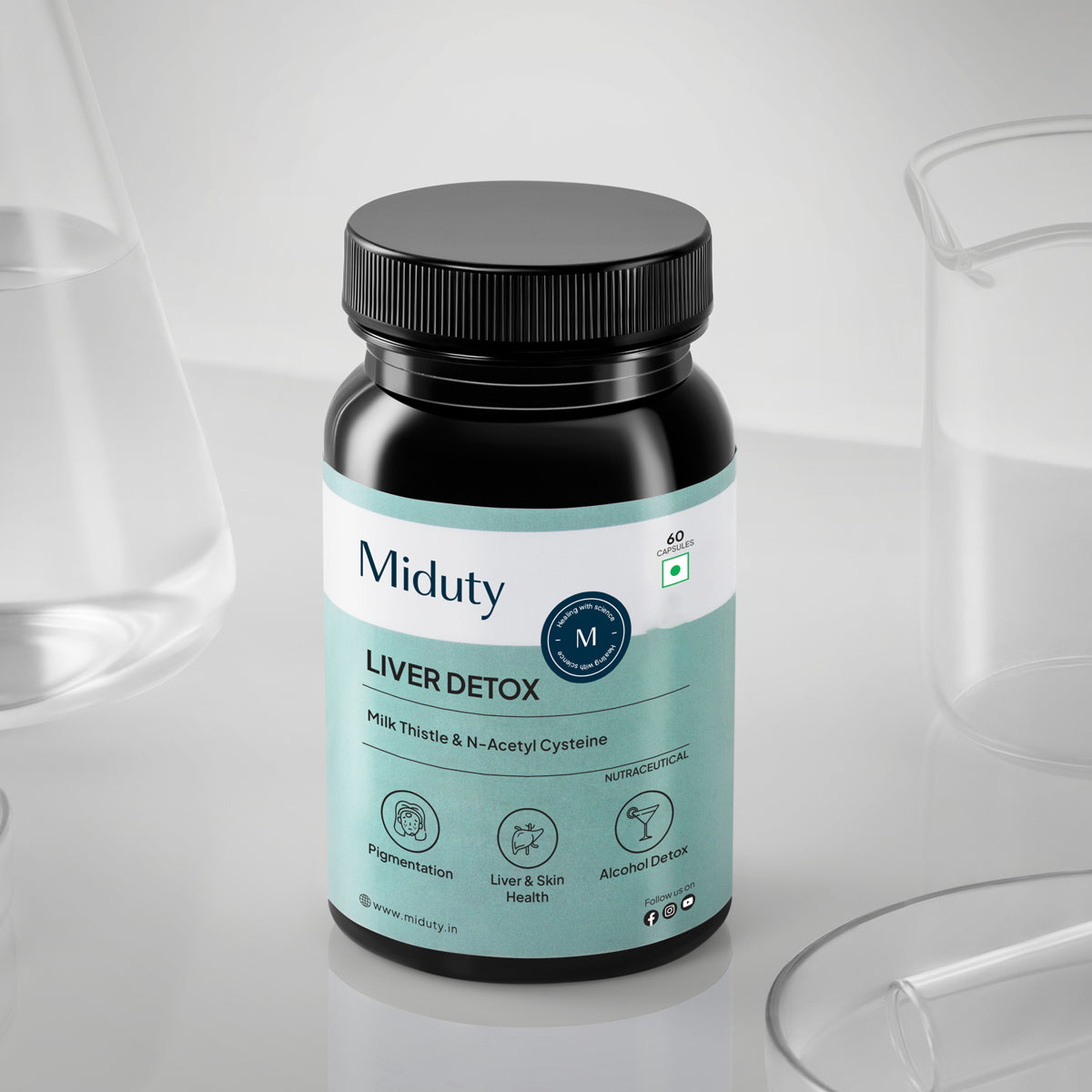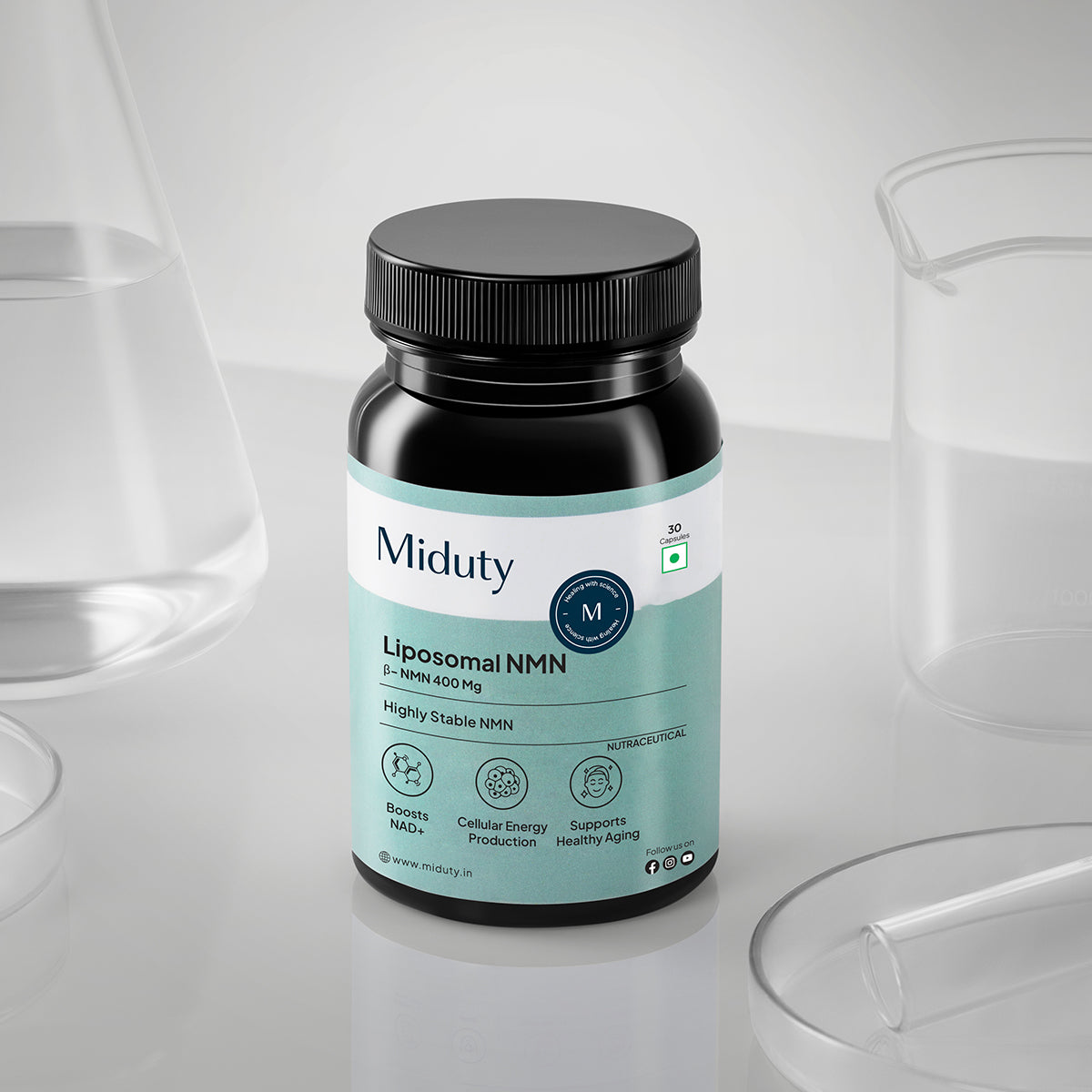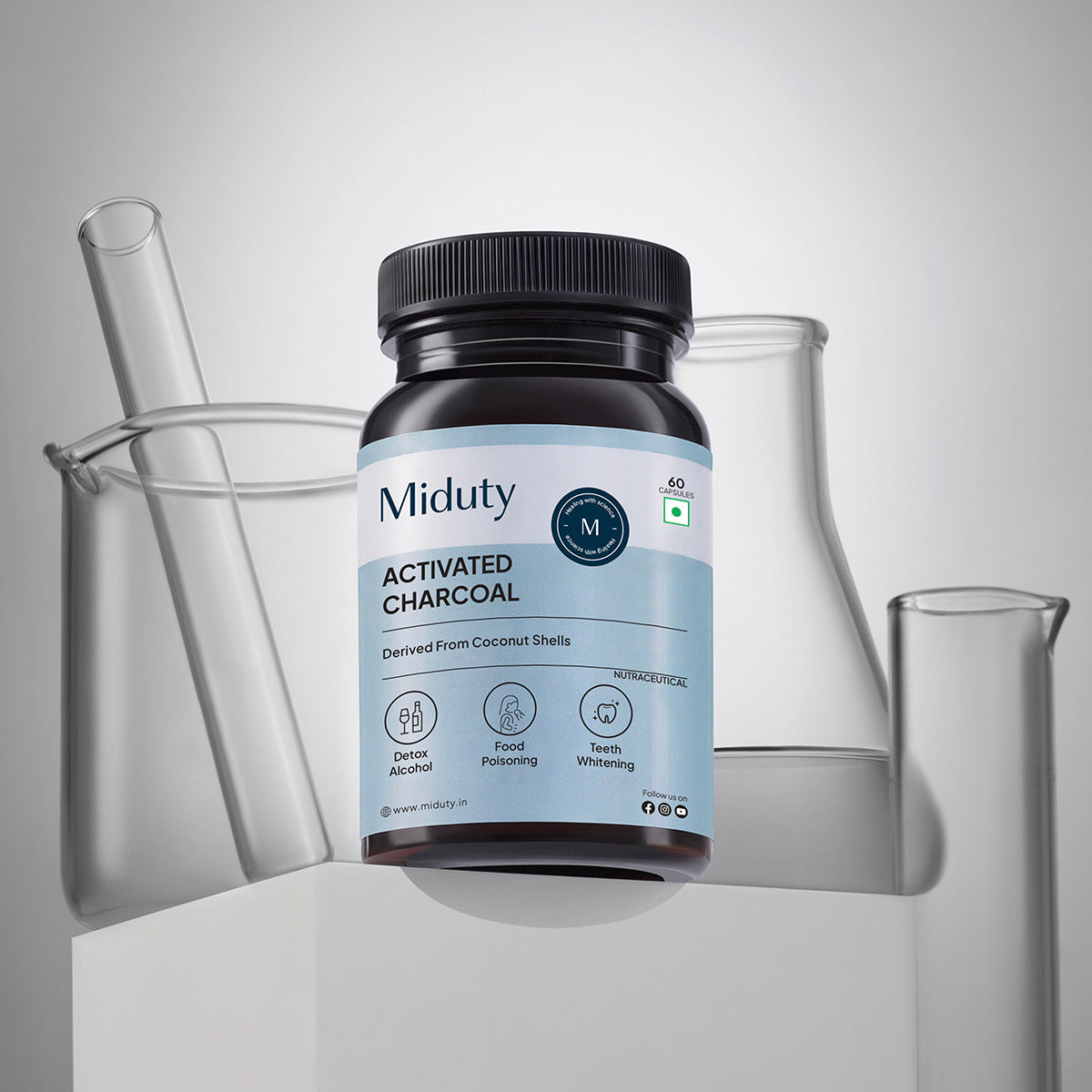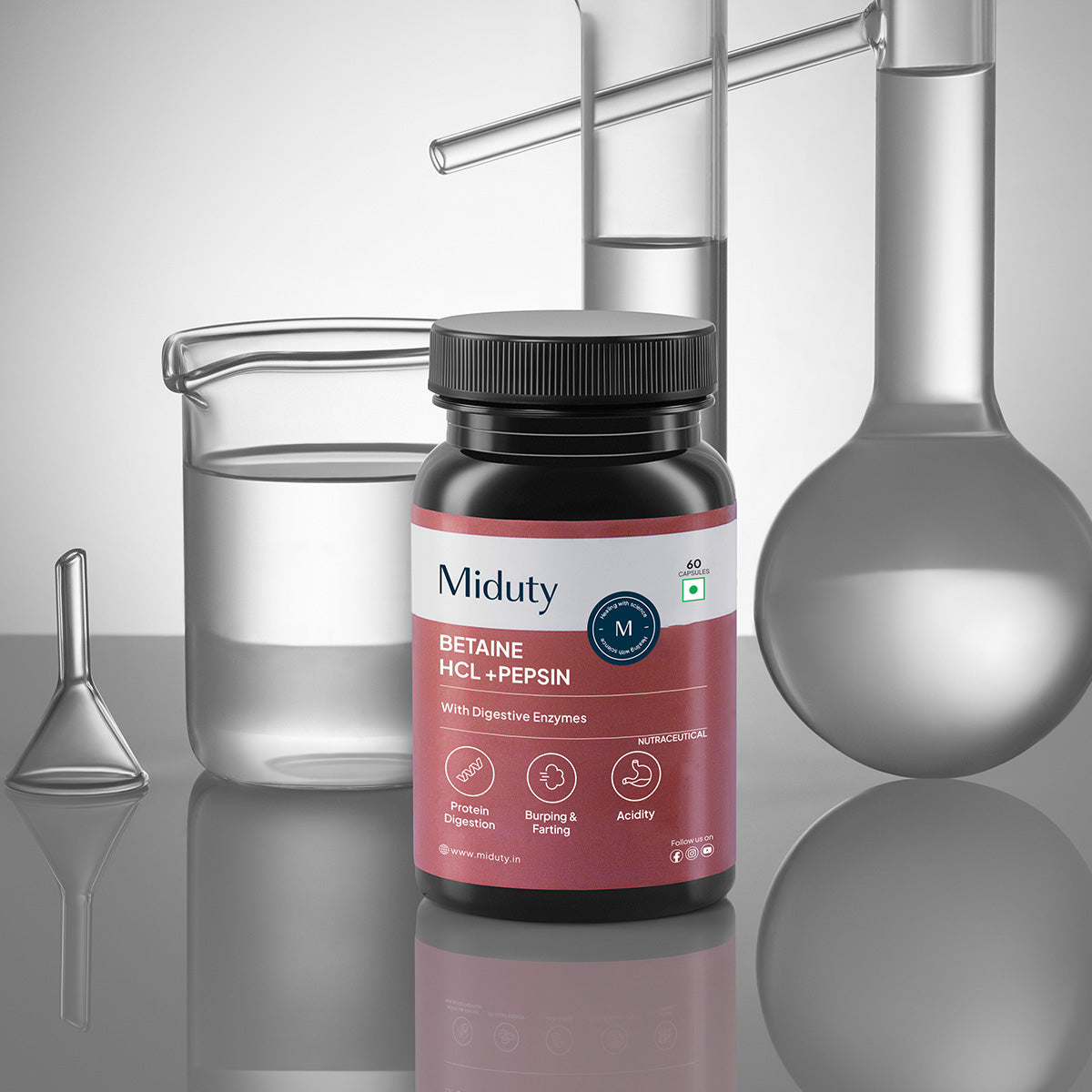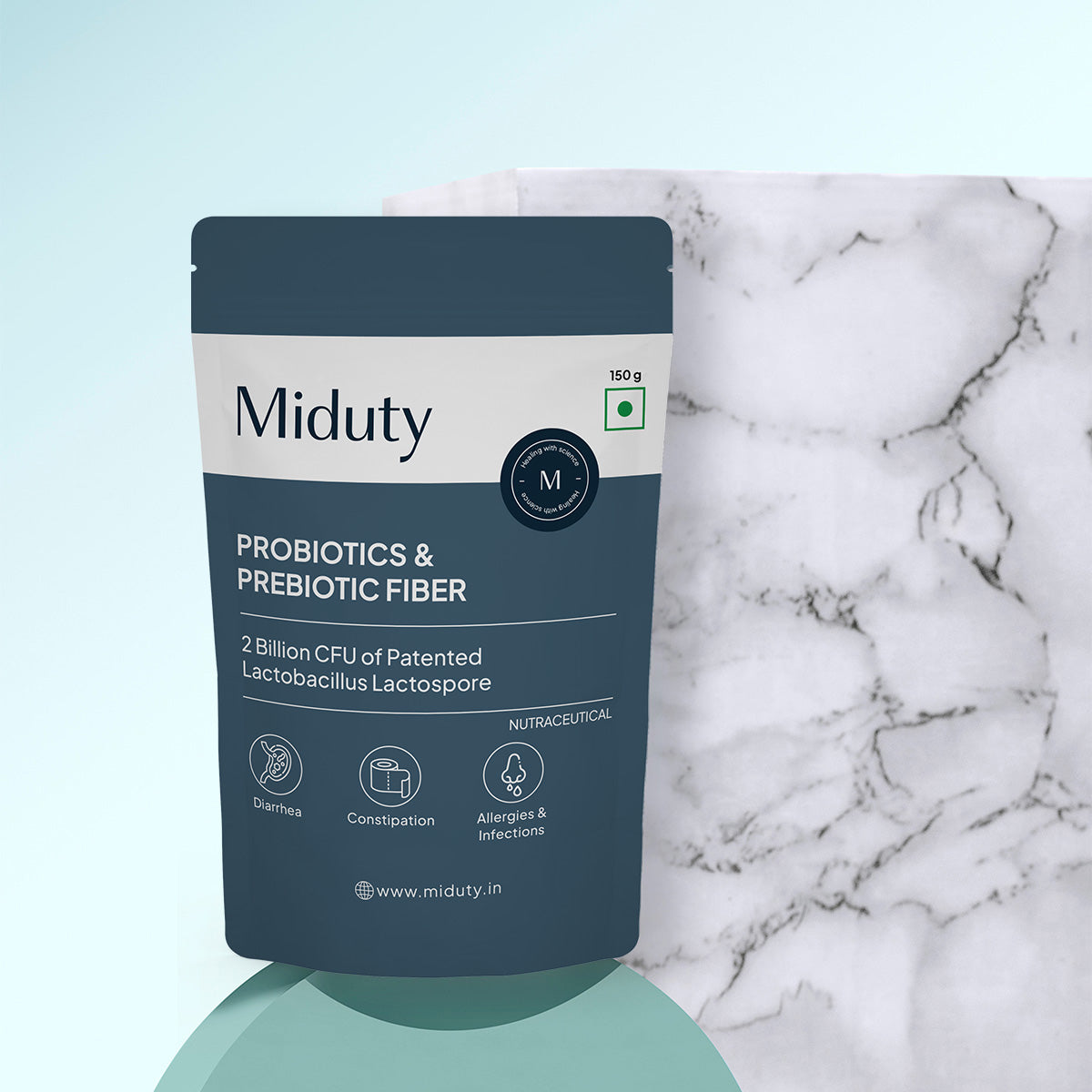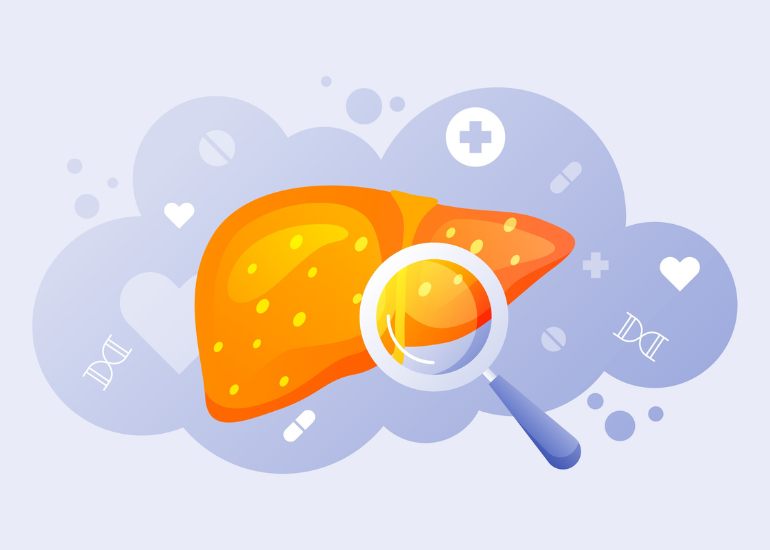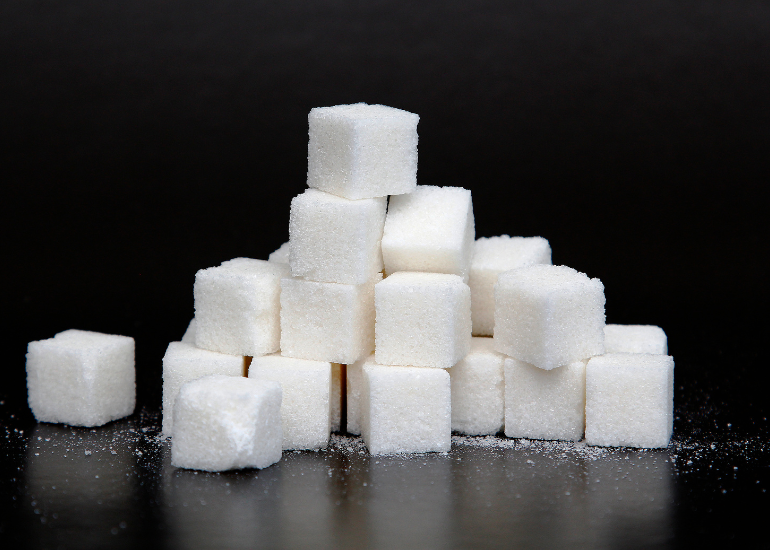
14 Warning Signs of Liver Damage From Alcohol Backed by Science
Alcohol is everywhere in Social gatherings, celebrations, and even quiet nights. But what many don't realize is how silently it can cause havoc on one of the most vital organs in your body, the Liver.
According to the World Health Organization (WHO), over 3 million deaths globally are attributed to alcohol use each year, with liver disease being one of the top culprits. An even more shocking fact is that the burden of alcohol associated liver disease (ALD) accounts for 5.1% of all disease and injury worldwide. And more shockingly, you can have liver damage and not even know it.
Because early symptoms of liver damage often come up as everyday issues like fatigue, mild pain, and appetite loss.
In this blog, we're diving deep into "14 signs of liver damage from alcohol". These signs aren't just important; they could save your life. We'll back every claim with studies, science, and statistics.
Let's explore what alcohol does to your liver and how to spot trouble before it's too late.
Key Takeaways
1. Over 3 Million Deaths Annually: According to the WHO, alcohol-related diseases kill over 3 million people globally every year, and the liver bears the brunt. Yet most people don't realize the damage until it's too late.
2. 90% of Heavy Drinkers Develop Fatty Liver: Fatty liver often shows no symptoms, but it's present in nearly 9 out of 10 heavy drinkers. Ignoring it now can lead to irreversible damage like cirrhosis later.
3. Yellow Eyes, Swollen Legs & Musty Breath: From jaundice to fatigue to spider-like blood vessels on your face, your body gives multiple warning signs. Recognizing them early could save your life.
4. Check Your Urine and Stool Colors: Dark tea-colored urine and pale, clay-like stools aren't harmless; they're early signs your liver is under stress. Start paying attention in the bathroom.
5. Cut the Alcohol; Your Liver Can Heal: The liver is the only organ that can regenerate itself, but only if you stop drinking early. Even a few weeks of sobriety can begin reversing fatty liver.
6. If You're Always Tired, It's Not Just Work Stress But Liver Fatigue: Persistent, unexplained fatigue, even with 8 hours of sleep, can mean toxin buildup due to poor liver detox. Don't ignore your energy crashes; investigate the cause.
How Alcohol Affects the Liver?
Your liver is a biochemical powerhouse. It filters toxins, supports digestion, and regulates blood composition. But when it comes to alcohol? It takes a beating.
When you drink, your liver metabolizes ethanol through enzymes, primarily alcohol dehydrogenase (ADH) and acetaldehyde dehydrogenase (ALDH). These enzymes convert ethanol to acetaldehyde, a highly toxic compound, and eventually to acetate, which your body can safely excrete.
The problem arises when alcohol is consumed in excess or over long periods. A study published in 2019 found that more than 90% of heavy drinkers develop fatty liver, the earliest stage of alcoholic liver disease. The liver becomes overwhelmed, leading to a lot of damage starting with fat accumulation, moving to inflammation (alcoholic hepatitis), and finally scarring (cirrhosis).
What's worse is that the liver has no pain receptors. So, you often won't feel a thing until the damage is severe.
Understanding how alcohol affects the liver gives us the foundation to spot the 14 critical warning signs before it's too late.
Stages of Liver Damage from Alcohol
Let's break down the destruction in a timeline. This progression is backed by medical data from the National Institute on Alcohol Abuse and Alcoholism (NIAAA):
Stage 1: Fatty Liver (Steatosis)
- Occurs in up to 90% of heavy drinkers.
- May appear within just a few weeks of excessive drinking.
Stage 2: Alcoholic Hepatitis
- Affects 35% of heavy drinkers.
- Involves inflammation and liver cell death.
Stage 3: Fibrosis and Cirrhosis
- Up to 20% progress to cirrhosis, a permanent scarring of the liver.
- Risk increases with duration and intensity of drinking.
Some people move rapidly through these stages, especially if other risk factors like obesity or viral hepatitis are present. Also, many remain asymptomatic until the liver is on the brink of failure.
Fatty Liver and Alcohol: The First Warning
Fatty liver disease, or hepatic steatosis, happens when fat builds up in liver cells. This is the most common alcohol-related liver issue, and yet, it's often ignored because symptoms are subtle or nonexistent. Worse, fatty liver is reversible, but only if caught early and alcohol is removed from the equation.
14 Signs of Liver Damage from Alcohol
1. Abdominal Pain and Swelling
This is one of the more direct symptoms of liver damage, but it's often misread.
Pain or discomfort typically occurs in the upper right quadrant of the abdomen, just under your ribcage. It may feel like a dull ache, a sharp jolt, or persistent bloating. But here's the thing: not all abdominal pain is liver-related, which is why context matters.
When your liver is inflamed or enlarged (a condition called hepatomegaly), it presses against the surrounding tissues. This causes discomfort. Swelling, meanwhile, may result from ascites, a fluid build-up due to impaired liver function.
This swelling may extend to your legs, too, due to fluid retention as a result of disrupted protein production by the damaged liver.
If you're feeling bloated and it won't go away, or you notice tenderness under your ribs after drinking regularly, it's time to listen to your gut.
2. Persistent Fatigue
Everyone feels tired now and then. But the exhaustion that comes with liver damage from alcohol is on a whole different level: it's persistent, deep, and doesn't go away with rest. This kind of fatigue is often one of the earliest, most overlooked symptoms of a struggling liver.
The liver is central to your body's metabolism and detoxification. It filters out toxins, breaks down alcohol, and supports energy production by regulating glucose levels. But when it's damaged, especially from chronic alcohol intake, these vital functions start to falter.
A study published in the Journal of Hepatology found that up to 26-39% of individuals with liver disease report ongoing fatigue. This happens for several reasons:
- Toxin build-up: A damaged liver fails to remove toxins efficiently, causing them to accumulate in the blood and brain.
- Impaired glucose storage: The liver stores and releases glucose for energy. Damage interferes with this process, leaving you drained.
- Inflammation: Chronic liver inflammation, common with alcohol-related liver damage, also saps energy.
This isn't the kind of tiredness that sleep can fix. It's a constant, nagging feeling of being "run down." If you find yourself dragging through your day even after a full night's rest, and you're a regular drinker, your liver might be in danger.
3. Yellowing of the Skin and Eyes (Jaundice)
This one is hard to miss and a huge symptom.
Jaundice is a condition marked by the yellowing of the skin and eyes, caused by a buildup of bilirubin, a yellowish pigment created when red blood cells are broken down. In a healthy liver, bilirubin is processed and excreted through bile. But in a damaged liver, this system breaks down, and bilirubin starts to accumulate in the bloodstream.
This isn't just a cosmetic issue. It's a clear sign that your liver's filtering system is malfunctioning.
In a 2022 report from the American Academy of Family Physicians, jaundice was listed as one of the top three symptoms in patients diagnosed with alcoholic hepatitis. It's most often seen in the moderate to late stages of liver damage, particularly in alcoholic hepatitis and cirrhosis.
Common signs include:
- Yellow-tinted eyes (sclera)
- Yellowish skin
- Dark urine (more on that soon)
- Itchy skin due to bile salt deposits
If you notice any yellowing of the skin or eyes especially after regular or heavy alcohol use; don't wait. It's an alert that liver function has been significantly compromised.
4. Swollen Legs and Ankles
When liver damage progresses, especially in cases of alcoholic cirrhosis, the organ loses its ability to regulate fluids properly. Because of this, you may observe swelling in your legs, ankles, and sometimes even feet.
The liver produces a vital protein called albumin, which helps maintain the balance of fluids in your blood vessels. When liver function declines, albumin levels drop, causing fluid to leak into surrounding tissues; a condition called edema.
Additionally, liver damage disrupts normal blood flow through the liver. This increases pressure in the portal vein, a condition known as portal hypertension due to which fluid backs up into the body's lower extremities.
Swelling related to liver disease:
- Typically occurs in both legs, not just one
- Can feel tight, tender, or puffy
- Worsens after long periods of sitting or standing
Accumulation of fluid as ascites is the most common complication of cirrhosis. This is occurring in about 50% of patients within 10 years of the diagnosis of cirrhosis. It is a prognostic sign with 1-year and 5-year survival of 85% and 56%, respectively. The swelling can range from mild to severe and may even lead to skin infections if left untreated.
5. Itchy Skin
Itchy skin might seem unrelated to liver problems, but it's a common symptom of liver damage from alcohol, especially in the earlier stages. The technical term for this is pruritus, and it can drive people crazy without any visible rash or irritation.
When the liver is impaired, it can't excrete bile effectively. This leads to bile salt accumulation in the bloodstream, which then settles into the skin and causes intense itching. It can feel like tiny ants crawling under the surface of your skin, and it often worsens at night.
In cholestatic liver diseases such as primary biliary cholangitis (PBC) and primary sclerosing cholangitis (PSC), pruritus is especially common. Up to 50-70% of patients with PBC report experiencing pruritus at some point during their disease course.
Key signs of liver-related itching:
- No rash or visible skin irritation
- Itching that's worse at night or in warm environments
- Itching focused on the hands, feet, arms, or legs
Scratching might offer momentary relief, but it won't solve the root problem. If dealing with unexplained, relentless itching and have a history of alcohol consumption, this could be your liver giving a warning sign.
6. Dark Urine
One of the most noticeable yet overlooked signs of liver damage is dark-colored urine, often described as tea-colored, cola-colored, or even dark orange.
This happens when bilirubin, the same pigment that causes jaundice, builds up in the bloodstream and gets excreted through the kidneys instead of the liver. The urine becomes saturated with bilirubin, changing its color dramatically. It's especially common in cases of alcoholic hepatitis and acute liver failure.
What to look for:
- Urine color noticeably darker than normal
- Strong or unusual odor
- No connection to dehydration or medication
It's worth noting: dark urine can be caused by other issues like dehydration or certain vitamins. But if the color change persists, especially alongside other symptoms on this list like jaundice or abdominal pain, it's a strong sign that alcohol is affecting your liver.
7. Pale Stool
Your stool can tell you a lot about your health, and when it comes to liver damage from alcohol, pale or clay-colored stool is a warning you shouldn't ignore.
Normally, your liver produces bile, a greenish fluid that helps digest fats and gives stool its brown color. But when your liver is damaged, especially due to prolonged alcohol use it either fails to produce bile or bile flow is obstructed. Due to which the Stool may appear pale, grey, or chalky.
It indicates a potential blockage in the bile ducts or a significant loss of liver function.
Important indicators:
- Stool that lacks normal brown color
- Accompanied by dark urine and yellowing of the skin
- Possible foul odor and greasy texture due to undigested fats
The condition is medically referred to as acholic stool, and when paired with fatty liver and alcohol, it may be an early symptom of alcoholic hepatitis or bile duct damage. If you spot pale stool consistently, especially alongside other symptoms, it's time to consult a doctor.
8. Nausea or Vomiting
Feeling queasy after a night of drinking is pretty common, but persistent nausea or vomiting, especially without recent alcohol consumption, is something much more serious.
A damaged liver fails to filter toxins properly, causing these harmful substances to build up in the bloodstream and affect the gastrointestinal system. This can lead to frequent feelings of nausea, bloating, and, in severe cases, uncontrollable vomiting. This nausea can come on suddenly, persist throughout the day, and may not respond to typical treatments.
Other possible reasons include:
- Inflammation of the liver (hepatitis)
- Increased stomach acid production
- Gastrointestinal irritation from alcohol
You might also experience upper abdominal discomfort, a sense of fullness after eating little, or even dry heaving. These symptoms often worsen as the liver's condition deteriorates, indicating that your liver is no longer handling its detoxifying responsibilities.
9. Loss of Appetite and Weight Loss
Ever notice you just don't feel hungry anymore? Or maybe you're dropping weight without trying? While that might sound like a dream come true, sudden appetite loss and unexplained weight loss are clear danger signs, especially if you're a regular drinker.
The liver plays a key role in metabolism and nutrient storage. When it's damaged by alcohol, the entire digestive system is affected. Food doesn't break down properly, nutrients aren't absorbed efficiently, and your metabolism becomes sluggish or erratic.
Why does it happen?
- Decreased bile production interferes with fat digestion
- Inflammation suppresses appetite
- Protein breakdown increases due to liver dysfunction
This leads to malnutrition, even if you're eating relatively well. Muscle loss becomes visible in the arms, legs, and face, and your clothes start fitting looser without explanation. If your appetite has vanished and the scale keeps dropping, it might be your liver silently crying out for help.
10. Easy Bruising and Bleeding
Have you noticed bruising more easily than before? Maybe a small bump leaves a dark purple mark, or you get nosebleeds out of nowhere. This isn't just a coincidence; it's a classic symptom of alcohol-induced liver damage.
Your liver produces proteins that are essential for blood clotting, including fibrinogen and prothrombin. When the liver is compromised, it can't make these clotting factors effectively. As a result, even minor trauma can cause excessive bruising or bleeding.
What to look out for:
- Frequent or unexplained bruises, especially on limbs
- Bleeding gums or nose
- Prolonged bleeding after cuts or injuries
- Blood in stool or vomit (in severe cases)
You may also notice petechiae, small red or purple dots on the skin caused by minor internal bleeding. If alcohol is a consistent part of your life and these symptoms start appearing, it's a strong sign that your liver's ability to function is seriously impaired.
11. Mental Confusion or Brain Fog (Hepatic Encephalopathy)
If you've ever experienced sudden mental confusion, memory issues, or disorientation and you drink regularly, there's a good chance your liver is involved.
This symptom is part of a condition called hepatic encephalopathy, which occurs when the liver can't filter toxins (especially ammonia) from the blood. These toxins travel to the brain, impairing its function.
According to a study in The New England Journal of Medicine, up to 45% of people with liver cirrhosis experience some level of hepatic encephalopathy. It ranges from mild forgetfulness to severe disorientation and even coma.
Signs to watch for:
- Mood swings
- Difficulty focusing
- Personality changes
- Slurred speech
- Drowsiness or excessive sleepiness
In the advanced stages, patients may appear intoxicated even when they haven't been drinking. Family members often notice the changes first. If you're having frequent "brain fog" episodes or memory lapses and alcohol is part of your routine, it's critical to get evaluated before this condition worsens.
12. Red Palms (Palmar Erythema)
Ever noticed your palms looking unusually red, almost like they're sunburned, especially near the base of your thumb and pinky? This condition is called palmar erythema, and it's a silent indicator of liver damage, particularly in those who consume alcohol frequently.
Palmar erythema occurs due to hormonal changes brought on by liver dysfunction. As the liver deteriorates, it fails to metabolize estrogen properly, leading to dilation of blood vessels in the palms. This reddish discoloration isn't painful, but it's certainly noticeable, especially against fair skin.
A 2020 study published in The Journal of Clinical and Experimental Hepatology found that approximately 23% of patients with alcoholic cirrhosis presented with red palms as a symptom.
Common features include:
- Redness mostly localized to the fleshy parts of the palms
- May appear blotchy or uniform
- Warm to the touch, but not itchy or painful
It's often one of those symptoms that people brush off until paired with others like fatigue or jaundice. But don't ignore it. When combined with heavy drinking, red palms could be your body's quiet signal that your liver is in trouble.
13. Spider Angiomas
If you've ever noticed tiny red lines on your skin that resemble spider webs or sunbursts, you might be looking at spider angiomas: small, dilated blood vessels that sit just beneath the skin's surface.
These lesions are typically found on the face, neck, chest, and arms, and they're associated with increased estrogen levels in people with liver damage. Much like red palms, spider angiomas form when the liver can't regulate hormone levels, especially in chronic alcohol consumers.
Key signs include:
- Central red spot with thin capillary extensions (like spider legs)
- Blanching (turns white when pressed, then returns to red)
- More than three spots may suggest systemic liver issues
14. Breath that Smells Musty or Sweet (Fetor Hepaticus)
This might surprise you: your breath can reveal a lot about your liver health. A condition known as fetor hepaticus, also called "liver breath," produces a musty, sweet, or sometimes metallic smell that's unmistakable and unsettling.
When the liver fails to filter out sulfur-containing compounds like dimethyl sulfide, these toxins accumulate in the bloodstream and are eventually exhaled through the lungs. It's essentially your body's way of trying to excrete waste products that the liver can no longer process.
Can Liver Damage from Alcohol Be Reversed?
Yes, liver damage from alcohol can be reversed, but only if it's caught in the early stages, such as alcoholic fatty liver.
The liver is the only internal organ capable of regenerating itself, and studies show that quitting alcohol can drastically improve liver health. Once the liver reaches the stage of cirrhosis, the damage becomes largely irreversible. At that point, medical intervention, lifestyle changes, and in severe cases, liver transplantation are the only options.
If you or someone you know is showing signs of liver damage from alcohol, quitting drinking immediately is the most powerful step you can take toward healing.
Conclusion
Liver damage from alcohol is a silent epidemic, quietly claiming the health of millions across the globe. It doesn't always scream for attention, but it whispers in ways your body is trying to communicate through fatigue, yellowing skin, bruises, confusion, and even your breath.
The signs we've discussed today, 14 in total, aren't just random symptoms. They're part of a dangerous pattern of how alcohol affects the liver over time. From the earliest stages of fatty liver to the brink of liver failure, the journey is preventable and in many cases, reversible.
If any of these symptoms feel familiar, it's not too late. See a doctor. Get tested. Make the change.
Because a better liver means a better life.
FAQ's On Alcoholic Liver Damage -
Q1. How to heal the liver from alcohol?
To heal your liver, stop drinking alcohol completely, follow a liver-friendly diet, stay hydrated, and consider supplements like milk thistle or NAC under medical supervision. Regular check-ups are essential.
Q2. Will my liver heal if I quit drinking?
Yes, the liver has a remarkable ability to regenerate. If the damage isn't severe (like cirrhosis), quitting alcohol can significantly improve liver health over time.
Q3. How does drinking alcohol affect the liver?
Alcohol is processed in the liver, and excessive drinking can cause fat buildup, inflammation (hepatitis), and eventually scarring (cirrhosis), which impairs liver function.
Q4. Is whisky good for the liver?
No, whisky or any form of alcohol can stress and damage the liver, especially when consumed regularly or in large amounts. Even small amounts can be harmful for those with liver issues.
Q5. Can I drink if I have fatty liver?
It's strongly advised not to drink alcohol if you have fatty liver. Alcohol can worsen liver inflammation and speed up the progression to more serious liver diseases.
References


